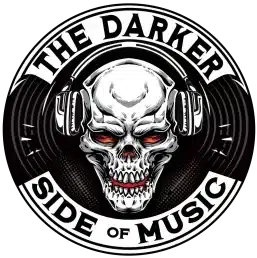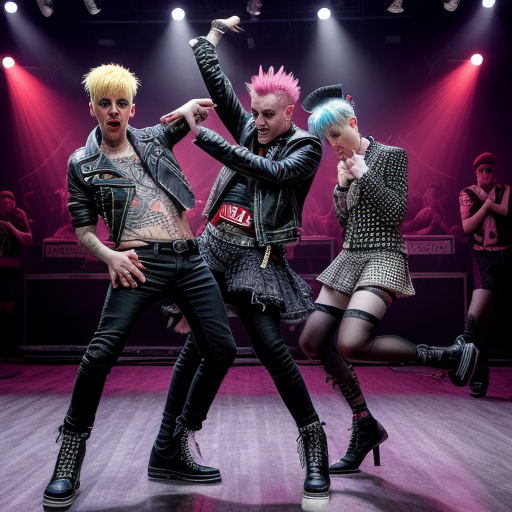The Evolution and Influence of Goth: A Closer Look at a Diverse Subculture
In the realm of subcultures, few have captivated and fascinated as much as Goth. Known for its dark aesthetics, unique fashion style, and ever-evolving musical genre, this diverse subculture has carved out an enduring niche in popular culture. From its origins in the late 1970s to its widespread influence today, Goth has undergone a remarkable evolution that transcends mere trends and reflects a deeper cultural expression. In this article, we delve into the nuanced history of Goth, exploring how it has evolved over time and examining its lasting influence on various aspects of society. By taking a closer look at this intriguing subculture, we can gain a better understanding of why Goths continue to arouse intrigue decades after their emergence.
The Birth of Goth: Tracing its Origins and Early Influences
Tracing the Origins of Goth
Goth, as a subculture, emerged from the post-punk movement in the late 1970s and early 1980s. The music genre that laid the foundation for goth was dark and melancholic, with bands like Bauhaus, Siouxsie and the Banshees, and Joy Division contributing to this brooding sound.
Early Influences on Goth Fashion
Influenced by Romanticism and vintage fashion styles, early goths often found inspiration in Victorian clothing. They embraced stark black outfits adorned with lace, velvet, corsets, and other elements reminiscent of Gothic literature. This combination of somber aesthetics created an iconic visual identity that would define gothic fashion for decades to come.
External Factors Shaping Goth Culture
Beyond music and fashion influences on its birth, goth culture was also influenced by external factors such as literature and film. Gothic fiction played a crucial role in shaping its themes of horror, darkness, deathly beauty, and introspection. Furthermore, vampires became significant figures within this subculture due to their association with immortality and mystery.
Fashion and Style: The Distinctive Look of Goth Throughout the Years
Goth Fashion: A Unique Style That Has Transcended Time
Goth fashion has been a distinctive and influential style within the subculture for decades. In its early years, gothic fashion was marked by dark and dramatic clothing choices, often inspired by Victorian-era attire. Black became the dominant color, symbolizing a rejection of mainstream trends and an embrace of individuality.
The 1980s: The Birth of Gothic Subculture
In the 1980s, goth fashion found its roots in punk and post-punk movements. Clothing featured elements such as fishnet stockings, leather jackets adorned with spikes or studs, and platform shoes known as "winklepickers." Hairstyles ranged from teased backcombed hair to elaborate braids or dreadlocks.
As the subculture evolved throughout the years, goth fashion incorporated influences from various sources such as medieval styles, romantic aesthetics inspired by vampire lore, Japanese street fashion (known as Gothic Lolita), cyberpunk motifs coupled with futuristic elements.
Today’s goth style continues to evolve while maintaining its core essence – a distinct blend of darkness, rebellion against societal norms combined with creativity expressed through unique attire.
The Evolution of Goth Music: From Post-Punk to Darkwave and Beyond
Goth music emerged in the late 1970s as a subgenre of post-punk, characterized by its dark, atmospheric sound and melancholic lyrics. Bands like Siouxsie and the Banshees, Bauhaus, and The Cure were pioneers in this genre, combining punk energy with introspective themes.
In the 1980s, goth music experienced a shift towards a more ethereal and synthesizer-driven sound known as darkwave. Artists like Cocteau Twins and Dead Can Dance embraced elements of dream pop and created hauntingly beautiful compositions that resonated with fans.
As goth continued to evolve in the following decades, it influenced multiple subgenres such as deathrock, industrial gothic, and neoclassical darkwave. This diversity within the goth scene allowed for experimentation while retaining its distinctive dark aesthetic.
Overall, goth music has undergone significant transformations but has always maintained its introspective themes and brooding atmosphere throughout different periods. Its impact on alternative music remains undeniable even today.
Goth’s Impact on Popular Culture: Examining its Influence in Film, Literature, and Art
Impact of Goth on Popular Culture
Film:
- Goth has had a considerable impact on the film industry, influencing both aesthetics and themes.
- Films such as "The Crow" and "Edward Scissorhands" showcase gothic motifs like dark atmospheres, elaborate costumes, and melancholic narratives.
- These movies have inspired a new wave of filmmakers who continue to incorporate gothic elements into their work.
Literature:
- Gothic literature, which emerged in the 18th century with writers like Mary Shelley and Edgar Allan Poe, heavily influenced modern goth culture.
- This genre is characterized by eerie settings, supernatural occurrences, and intense emotions.
- Contemporary authors such as Neil Gaiman and Anne Rice have continued this tradition with their dark fantasy novels that resonate strongly within the goth community.
Art:
-Gothic art challenges traditional notions of beauty through its use of macabre imagery and symbolism. -Artists like H. R. Giger are known for creating intricate pieces that explore themes of death and the subconscious mind. -The influence of these artists can be seen not only in galleries but also in album covers for bands ranging from The Cure to Marilyn Manson.







